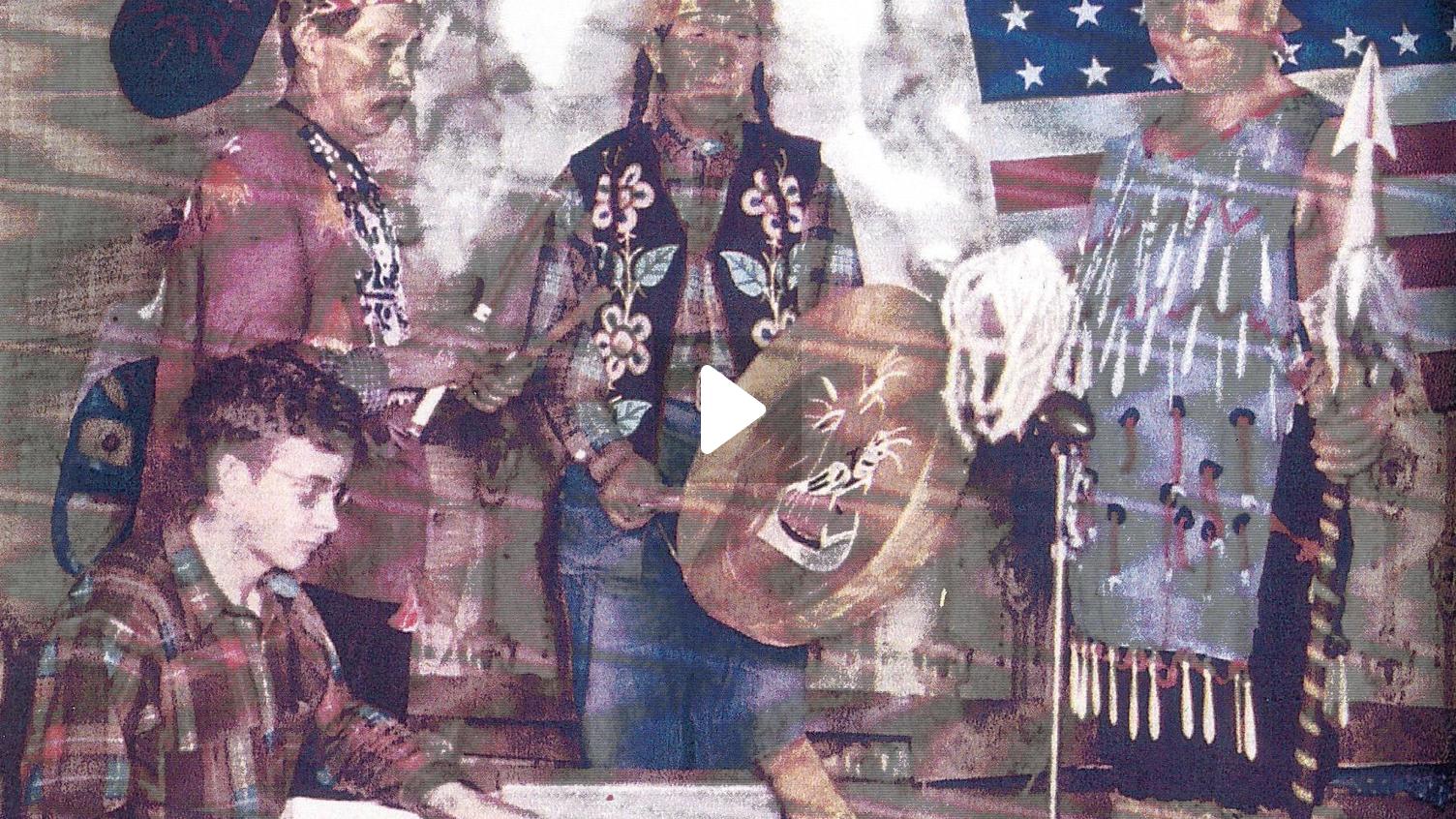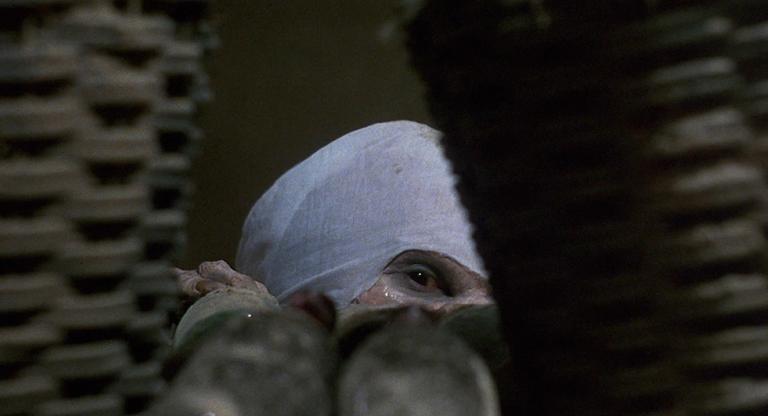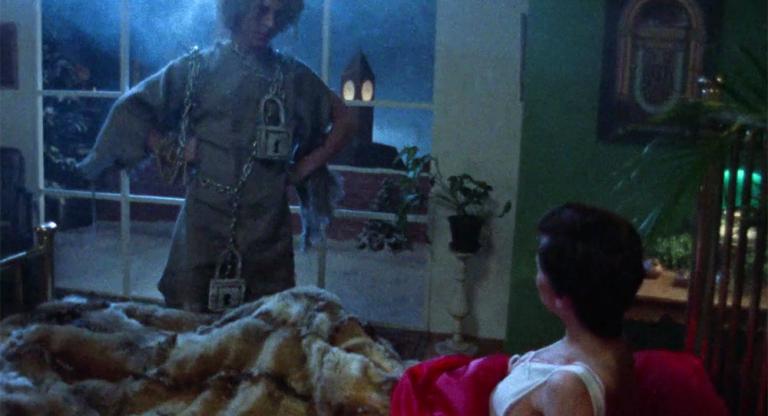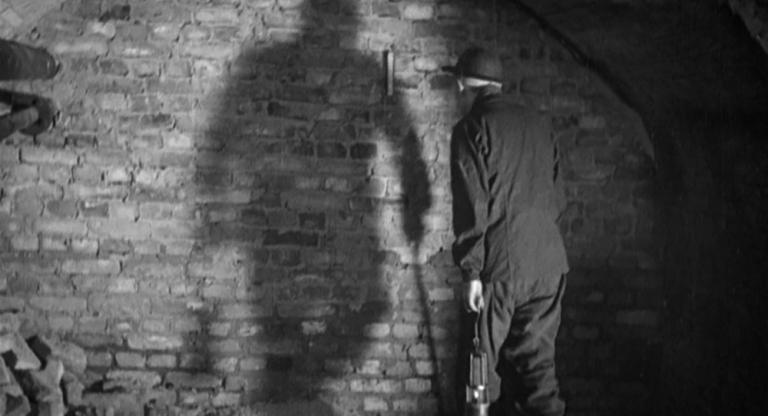When Paola Igliori first knocked on Harry Smith’s door at the Chelsea Hotel, she never dreamed it would lead to a book, American Magus, compiled from interviews with Jordan Belson, Robert Frank, Allen Ginsberg, and Jonas Mekas along with archivists, occultists, and assorted downtown characters. Igliori will be at Anthology Film Archives tonight to celebrate Semiotext(e)’s new edition of the book with a screening of the documentary that grew out of it. From her home in Rome, we spoke about acts of rough magic and spontaneous combustion.
Ann Lewinson: You just knocked on Harry Smith’s door . . .
Paola Igliori: Yeah. I was thinking for a while how to connect with him. Then I found these cards on the street of early blues musicians—Blind Lemon Jefferson and Robert Johnson—and I knew he collected cards.
AL: Were these Tarot cards, playing cards . . . ?
PI: They were cards to play, but I don’t know what kind of game you played with them. I knocked on his door and I said, “You don’t know me. I’m Paola from the ninth floor and I’d like to bring you a little present.” And he said, “Go away!” So I said, “OK, OK. I’ll just leave it outside.” He was silent for a while, and then he said, “Well, come in. I am starved for company.”
AL: You were living in the Chelsea?
PI: No, I had an office on the ninth floor. I had a small press called Inanout Press with artist Michele Zalopany. I’d heard a lot about Harry being the shaman-in-residence at Naropa, so I wanted to connect with him.
He was in this room with books piled up really high and this little bed in the middle. In my film you go into his room just two days after he died, and you can see all the piles of books. His scope of interests was amazing. Different kinds of tarots, empty crates of milk.
AL: Was he a big milk drinker?
PI: Yeah. That famous photograph of Allen Ginsberg’s, turning milk into milk—
AL: What kind of shape was he in?
PI: He was very frail. He came back from Naropa because he wasn’t well. And I had this extraordinary conversation with him in which we touched things I didn’t even know I knew. It just aligned worlds. You felt as if they were surfacing from distant memories.
I thought at that moment, I want to buy a camera and leave it on in a corner. And I did buy a small video camera, but I thought it might distract me. So I didn’t bring it. The first time I actually used the camera was just after Harry died.
AL: How much time did you have with him?
PI: It must have been a little less than a year. I used to go once a week to visit him, and [we would] spend these extraordinary times together.
AL: Tell us about the last time.
PI: I was putting together my book on John Trudell, which also inspired me profoundly—and I suddenly felt that I had to call Harry. A woman answered, which was strange because he was always alone. She said, “Come as soon as you can.” When I arrived, he was in a bed, coughing blood. He was dying the same way my father died. And Harry was born the same day and the same year my father was born.
I said, “Harry, you’re really sick. Maybe we should call the doctor.” And he said, “No, please don’t.” And, you know, being Italian, I didn’t have this thing, Oh, I have to call a doctor, so I just held him. Then suddenly he started singing this chant, “I’m dying. I’m dying. I’m dying,” and died, singing.
I ran upstairs to call Raymond Foye. He called the ambulance, and they started pumping him, and he made these weird noises when air went in and came out. It reminded me of those recordings he made on the Bowery of old men dying.
AL: Then his body was on ice for 49 days at St. Vincent’s?
PI: Yeah.
AL: Because Allen Ginsberg said that’s how long one spends in the Bardo?
PI: I think first they put him on ice because they wanted to wait for Rosie [Rose Feliu-Pettet] to come back. Rosie was his—well, Harry called her his wife. You know this story about Rosie, having her kiss all the drunk men on the Bowery? They were going down the Bowery— Rosie was so beautiful in a wedding dress—drinking this red wine.
Rosie was a great friend of mine. She was a dominatrix at some point, and I remember going to see her in this place with different rooms, like different theaters, and then we would go to De Robertis, this Italian old-school pastry place near where Allen and Rosie lived, because Rosie’s sister was the girlfriend of Peter Orlovsky for a while, and they both lived at Allen’s house on 11th Street.
AL: I really enjoyed that interview. Did you set out to interview people with the idea of writing a book?
PI: No. Allen said, “It’s not by chance that you were with him when he died. You have a mission; you should start interviewing people that were close to Harry.”
AL: You started with this real Lower East Side character, Lionel Ziprin.
PI: One day the doorbell rang and there was this elder, with a black hat and white curls on the sides of his face and a long white beard. He was like Hasidic. He said, “I’m Lionel Ziprin. I haven’t been out of my house for I don’t know how many years, but I came to see you. Why was it you that was with Harry when he died?”
AL: He seems wild. I mean, the interview is wild. It goes all over the place.
PI: Yeah. He’s totally wild. And totally like a child. Ancient wise man.
AL: Smith was sort of his long-term houseguest in the early ’50s.
PI: He says, “Harry came to me the morning after I got married, and he stayed about 17 years.” Lionel was really a treasure. But they were all people that were extraordinary in their own right, throwing light on different aspects of Harry. Khem Caigan was an amazing alchemist, and I’m really sorry that he’s not with us anymore. Now I’m coming back to New York for the reprint of the book with Semiotext(e), which looks beautiful because it has so many color plates that weren’t in there before and so many additions. And Khem is not there anymore. Dr. Joe Gross, another extraordinary man, he’s not with us anymore.
AL: You call Smith, affectionately, “a clown doing everything backwards.”
PI: Yeah.
AL: So, let me get this straight: You were printing test pages for the original edition of the book, a still of the two profiles from Heaven and Earth Magic . . .
PI: Exactly.
AL: And the art came out backwards—
PI: —also the writing—
AL: —and then your house caught on fire?
PI: Yeah. My house caught on fire—
AL: —as this was being printed out?
PI: Well, I think it was the same night. We woke up in the middle of the night with smoke all over, the fire brigades had to come in. It was a serious fire. Harry always had these weird fires.
AL: What brought you to New York in the first place?
PI: Well, I was with Sandro Chia, and he came to do his first show in New York in 1980, and he kind of became overnight famous. He had the Village Voice writing this big piece on him. So we stayed. I was very shy and reading a lot at home. Rene was my first friend, because I didn’t go out that much.
AL: This is Rene—?
PI: Rene Ricard. I did his book, Trusty Sarcophagus Co. When his house burned down, he started living on the F train and taking big pieces of wood and writing these poems like paintings, huge—like, to exist somewhere as he didn’t have a house anymore. He left them at my house, so I started photographing them. The book was a collection of those poems that he wrote while he was living on the F train.
AL: Was that Inanout Press’s first book?
PI: No. Michele and I went to Morocco to do a book with Paul Bowles. I was really hoping that we could do something on Isabelle Eberhardt. She lived in North Africa and dressed as a man in order to get places that women couldn’t get to. Paul was talking about translating some of her writings.
In the end we chose Mohamed Mrabet, and the book was called Chocolate Creams and Dollars, which was what the Americans had left after the war. Then there was a book called Baby Lies Truthfully by a young British poet who is not with us anymore, David Robilliard. Then I edited a book for Edit DeAk by Cookie Mueller and Vittorio Scarpati. Cookie was a friend of mine, and she was dying of AIDS, and so was Vittorio, her husband, who was Italian like me. Vittorio made these amazing drawings, really heartbreaking, like Saint Sebastian with arrows all over his body, but the arrows were needles and syringes. And then Cookie would write three, four lines underneath them. It was called Putti’s Pudding.
AL: You also had a book out a couple years ago, Red Flower Vision (Wild Embers Press, 2020)
PI: It has excerpts from my books, like Entrails, Heads & Tails, which Rizzoli published, on ten contemporary artists. I started with Louise Bourgeois, who I used to visit every Thursday. She lived in Chelsea in a townhouse. The whole house was a studio. In the garden she had something that really touched me deeply—what do you call it? The burattini. I don’t know if you had them in the States.
AL: A puppet theater.
PI: And inside there was a mannequin, I think, and bullet holes all around it. And the title was “Surviving Childhood.”
AL: Which brings us back to Harry Smith. He claimed these various backstories, like saying his real father was Aleister Crowley, who seduced his mother on a beach. What do you believe about Smith’s early life?
PI: Well, some people have this way of talking in parables. I have very close family members that are like that. My Comanche grandfather Spirit Eagle was totally like that.
AL: You had a Comanche grandfather?
PI: Not my blood grandfather. He’s an elder that lived with us for 17 years, until he died. He had this mythological way of talking that was more real than a lot of realities. I was always, since I was very little, drawn towards Andersen’s fairy tales and all that. So I don’t really care if it’s the truth or it’s made up because I’m interested in what it tells, really.
AL: And what does it tell?
PI: Well, obviously Harry and Aleister had some characteristics that connected them profoundly. You know, he lived upstairs from this Aleister Crowley temple. His grandfather was already a researcher in this field, I think.
AL: Someone in the film compares Smith to Rumpelstiltskin: he’s an alchemist turning straw into gold, but has terrible tantrums.
PI: Ziprin says that.
AL: He was so destructive—throwing one of Anthology’s projectors out the window!—and self-destructive. Why do you think he was so self-destructive?
PI: Lionel thinks it has to do with something in his childhood. When his mother was dying, he was telling her all these sadistic things. So there must have been something going on.
AL: So the intense focus necessary to make his films was born out of childhood trauma?
PI: I think he was just an incredibly explorative person, but he had probably problematic parents. And both his inner drive and his outer drive brought him into traveling through dimensions since he was very young.
AL: Something else I didn’t know about Smith was the full range of his interests—the collections of string fingers, Ukrainian eggs, tin cans rolled flat by cars, paper airplanes. How does one preserve a collection of paper airplanes?
PI: It is in the Smithsonian!
AL: It’s really in the Smithsonian?
PI: Yes.
AL: Boxes of paper airplanes?
PI: Well, hopefully. That’s what shocks me, that all those things have been in boxes forever. Someone should do a Harry Smith Museum where all these things live. They’re so interconnected and so powerful.
AL: What do you think drove this desire to collect?
PI: He wanted to have series of things in order to understand the dynamics of it, the secret language of nature. Like the eagle that sees the whole valley, but can zero in on the rabbits. That’s the work Harry has done in so many fields.
AL: You had all this audio from the interviews—when did you think that this could be a documentary?
PI: I didn’t really think it was going be a documentary. I thought, I’m going to do a little thing for Harry, ten years from his death. Then it started growing and growing, and there was no stopping. I had to find how to narrow it down, and it was really difficult. I had three or four or five editors that came up to see me, and one of them had just finished working with Stan Brakhage, and she came out of Yale or Harvard. And she said, “We’ve got to write a storyboard.” I couldn’t work with a storyboard. I could only work organically.
Finally I found this woman that would follow me in these meanderings in which I would take one thing from one place, one thing from another, and say, “Let’s put it together in this way.” Then I got another guy that did more special effects. We were working from maybe 9:30, 10 until about 6. Then my son would come back from school and we’d do homework and have dinner. Then I would put him to bed and at about 9:30, 10, the other editor came and he worked till 2 in the morning. Then I would see everything that we put together and go to sleep. And by the morning I would come up with new inspiration. It was totally organic like that. I wouldn’t know any other way of doing it.
So, one day while I was in this incredibly intense mode of focus, I went outside, trying to take some air. And a guy comes by and says, “I haven’t seen you around. Are you new in the neighborhood?” I said, “No, but I’ve been working very hard on a film.” “About what?” I said, “You wouldn’t know him, probably. Harry Smith.” And he said, “Harry lived in my house for like a year. I have a film of him.” So he gave me that film of Harry talking to this girl. The one time I was out on the stoop, after a month that I wouldn’t even put my nose outside the door. So like all of it, total magic.
AL: Smith’s really having this moment with the upcoming Whitney show and John Szwed’s book. [He’ll be at Anthology on April 18th.] Why is this happening now?
PI: Harry did say that his work would be understood fifty years after his death. Now it’s only like thirty years. It’s a moment in which there is the possibility, in chaos, of creation. And so this chaos and creation is very connected to Harry.
Harry Smith: American Magus screens tonight, April 7, preceded by Harry Smith’s rarely screened Film No. 6 (1948-51) and Film No. 7 (1952), followed by a conversation with Paola Igliori and Paul D. Miller, aka DJ Spooky.



